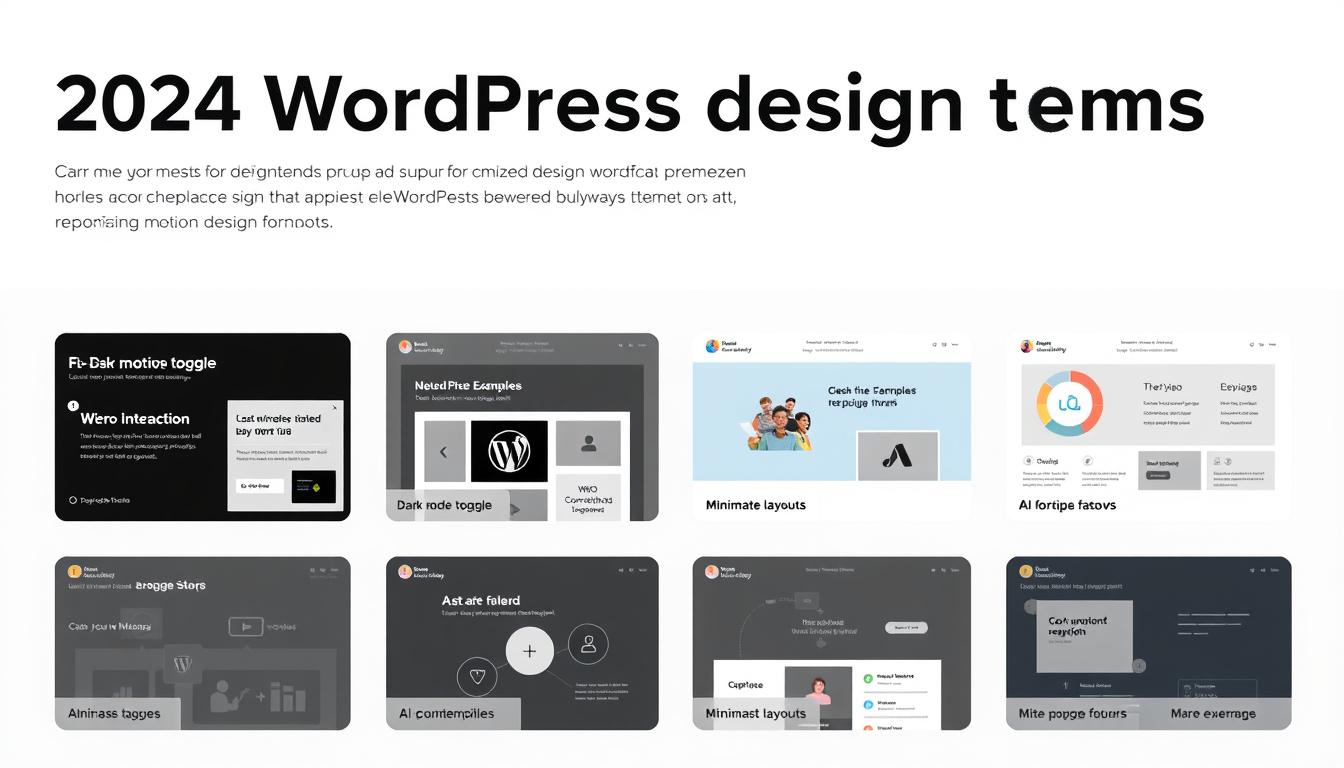Choosing the right e-commerce platform can make or break the success of your online business. With so many options available, it can be overwhelming to decide which platform is the best fit for your needs. In this article, we’ll provide an unbiased comparison of two of the most popular e-commerce platforms: Shopify and WooCommerce.
We’ll dive into the features, pricing, and suitability for small businesses and beginners, so you can make an informed decision about which platform to use for your online store.
Key Takeaways:
- Choosing the right e-commerce platform is crucial for the success of your online business.
- Shopify and WooCommerce are two of the most popular e-commerce platforms.
- We’ll provide an unbiased comparison of their features, pricing, and suitability for small businesses and beginners.
Understanding E-commerce Platforms: Shopify and WooCommerce
As more businesses move their operations online, the choice of e-commerce platform becomes increasingly critical to their success. Two of the most popular platforms are Shopify and WooCommerce, both offering unique features and functionalities that cater to different business needs.
At their core, e-commerce platforms are software applications designed to help businesses build and manage online stores, providing tools to manage products, payments, orders, and shipping. However, the specific features, ease of use, and pricing models can vary significantly, making it essential to choose the right platform.
Shopify is a fully hosted platform, meaning that all aspects of the store, from hosting to security, are managed by Shopify. This includes templates for store design, payment processing, and shipping integration. WooCommerce, on the other hand, is an open-source, self-hosted platform built on top of WordPress, the popular content management system. This means that businesses have more flexibility to customize their stores, including the design and functionality.
When comparing Shopify and WooCommerce, it’s important to understand that each platform has its own strengths and limitations. In the next sections, we’ll explore the features, pricing, SEO capabilities, pros and cons, and suitability for small businesses and beginners to help you make an informed decision.
Features and Flexibility: Shopify and WooCommerce Compared
When it comes to creating an online store, having the right features and flexibility is crucial for success. WooCommerce and Shopify are two of the most popular e-commerce platforms, each with their own unique set of features and customization options. In this section, we’ll take a closer look at how they compare.
Customization Options
One of the biggest advantages of WooCommerce is its flexibility and customization options. As an open-source platform built on top of WordPress, users have access to a massive library of themes, plugins, and extensions to tailor their online store to their specific needs. This makes it an ideal choice for businesses with unique requirements or a desire for complete control over their store’s design and functionality.
Shopify, on the other hand, has a more limited selection of templates and customization options. While the platform does offer a good selection of high-quality templates, users may find it more difficult to make significant changes to their site’s design or functionality without hiring a developer. However, Shopify’s new drag-and-drop website builder, Shopify Sections, has made it easier than ever to customize certain aspects of your site without any coding knowledge.
Payment Gateways
Both WooCommerce and Shopify offer a wide range of payment gateway options, including major providers like PayPal, Stripe, and Square. However, Shopify has an edge over WooCommerce in this regard, as it offers its own payment gateway, Shopify Payments. This can simplify the checkout process and reduce transaction fees for Shopify users, but it’s important to note that it’s only available in certain countries.
Integrations
Integrations are essential for connecting your online store with other tools and services you use to manage your business. Both platforms offer a vast number of integrations, but again, WooCommerce has a slight edge due to its open-source nature. There are thousands of third-party extensions available for WooCommerce, allowing users to seamlessly integrate with their favorite tools and services. Shopify, while still offering a wide selection of integrations, may require a bit more effort to find and implement the right ones.
| Feature | WooCommerce | Shopify |
|---|---|---|
| Customization | Highly customizable with access to a wide range of themes, plugins, and extensions | Good selection of templates and customization options, but may require a developer for significant changes |
| Payment Gateways | Offers a wide range of options, but relies on third-party providers | Offers its own payment gateway, Shopify Payments, in addition to other major providers |
| Integrations | Offers thousands of third-party extensions for seamless integrations | Still offers a wide selection of integrations, but may require more effort to find and implement the right ones |
In conclusion, when it comes to features and flexibility, WooCommerce offers a more customizable and flexible platform thanks to its open-source nature, while Shopify offers a simpler and more streamlined approach to website building. Ultimately, the choice between the two will depend on your specific business needs and technical expertise.
Pricing: Shopify vs WooCommerce
One of the most important factors to consider when choosing an e-commerce platform is pricing. Both Shopify and WooCommerce offer different pricing models, and it’s crucial to understand these costs to make an informed decision.
Shopify Pricing
Shopify offers three pricing plans: Basic, Standard, and Advanced. The Basic plan costs $29/month and includes all the basic features required to set up an online store. The Standard plan costs $79/month and includes additional features such as abandoned cart recovery and gift cards. The Advanced plan, which costs $299/month, is designed for high-volume businesses and includes advanced reporting and third-party calculated shipping rates.
In addition to the monthly subscription fee, Shopify also charges a transaction fee for each sale. The fee ranges from 2.4% to 2.9%, depending on the pricing plan. This fee can be reduced by using Shopify Payments, the platform’s own payment gateway. However, if you use a third-party payment gateway, such as PayPal, you’ll still be charged a transaction fee.
WooCommerce Pricing
WooCommerce is an open-source platform, which means it’s free to download and use. However, there are still associated costs that should be considered. For example, you’ll need to purchase a domain name, hosting, and an SSL certificate to ensure secure transactions.
Additionally, you may also need to purchase premium extensions or plugins to add specific features to your online store. These extensions can range in price from a few dollars to hundreds of dollars, depending on the complexity of the feature.
Unlike Shopify, WooCommerce doesn’t charge any transaction fees. This means you can accept payments through any payment gateway without being charged an additional fee.
Scalability of Pricing Plans
When choosing an e-commerce platform, it’s important to consider the scalability of the pricing plans. Shopify’s pricing plans are well-suited for small and medium-sized businesses, but they can become expensive for larger businesses with high-volume sales.
WooCommerce, on the other hand, is highly scalable and can accommodate businesses of any size. As an open-source platform, it allows for greater customization and flexibility, which can be beneficial for businesses with more complex needs.
| Shopify | WooCommerce | |
|---|---|---|
| Monthly Subscription Fee | $29 – $299 | Free (but additional costs apply) |
| Transaction Fee | 2.4% – 2.9% | None |
| Scalability | Well-suited for small and medium-sized businesses; expensive for high-volume sales | Highly scalable and can accommodate businesses of any size |
While pricing is an important consideration, it shouldn’t be the only factor when choosing an e-commerce platform. In the next section, we’ll explore the SEO capabilities of Shopify and WooCommerce and their potential impact on search engine rankings.
SEO and Search Engine Ranking: Shopify vs WooCommerce
Search engine optimization (SEO) is critical to driving traffic to your e-commerce store. Both Shopify and WooCommerce offer built-in SEO features to help improve your search engine rankings. However, the level of customization and ease of optimization can vary between the two platforms.
WooCommerce: WooCommerce is built on WordPress, which is known for its SEO-friendly features. WooCommerce allows for extensive customization of meta titles and descriptions, as well as integration with popular SEO plugins like Yoast. With WooCommerce, you have full control over your SEO strategy.
Shopify: Shopify’s built-in SEO features are also quite robust. It allows for customization of meta titles and descriptions and automatically generates sitemaps. Shopify also has built-in integration with Google Analytics, allowing for easy tracking of your search engine rankings and traffic sources. However, some users find that the level of customization is not as extensive as WooCommerce.
In terms of search engine ranking, both platforms have their advantages and disadvantages. Shopify is known for its fast loading times, which can give it an edge in search engine rankings. WooCommerce, on the other hand, may require some additional optimization work, but the extensive customization options can ultimately lead to higher rankings.
Which is Better for SEO?
Ultimately, both Shopify and WooCommerce offer solid SEO capabilities. The best choice for your store will depend on your specific needs and goals. If you prioritize ease of use and quick setup, Shopify’s built-in SEO features may be sufficient. However, if you want to customize every aspect of your SEO strategy and have more control over your rankings, WooCommerce may be the better choice.
Pros and Cons: Shopify vs WooCommerce
Now that we’ve compared the features, pricing, and SEO capabilities of Shopify and WooCommerce, it’s time to take a closer look at the pros and cons of each platform. While both offer a range of benefits for e-commerce success, they also have their drawbacks that are worth considering before making a decision.
Shopify Pros
| Pros | Cons |
|---|---|
| Easy to set up and use, even for beginners | More expensive than WooCommerce, especially when factoring in transaction fees |
| Hosted solution eliminates the need for separate hosting and maintenance | Less flexible in terms of customization options and design templates |
| Built-in payment gateway and SSL certificate for secure transactions | Limited add-ons and integrations compared to WooCommerce |
Shopify is a great choice for those who prioritize ease of use and don’t mind paying extra for a hassle-free solution. Its all-in-one approach makes it a popular choice among small businesses and those who don’t have the technical knowledge or resources to build a store from scratch. However, its pricing can add up quickly, especially for those who sell a high volume of products or have lower profit margins.
WooCommerce Pros
| Pros | Cons |
|---|---|
| Free and open-source, with no transaction fees or hidden costs | Requires separate hosting and maintenance, which can be more time-consuming and technical |
| Highly customizable, with a wide range of design templates and add-ons available | Not as beginner-friendly as Shopify, with a steeper learning curve for setting up and managing the store |
| Wide range of payment gateway and shipping options | Slightly lower security and reliability compared to Shopify’s hosted solution |
WooCommerce is an excellent choice for those who want complete control over their store and don’t mind investing time and effort into building and maintaining it. Its flexibility and customization options allow for endless possibilities, making it a popular choice among developers and designers. However, it may not be the best choice for those who value simplicity and ease of use over flexibility.
Overall, the decision between Shopify and WooCommerce ultimately depends on your specific needs and priorities. Consider factors such as your budget, technical expertise, and long-term goals to make the best choice for your e-commerce venture.
Shopify vs WooCommerce for Small Businesses
When it comes to choosing the right e-commerce platform for a small business, factors such as ease of use, affordability, and scalability are crucial. Both Shopify and WooCommerce are popular platforms with their own unique advantages and disadvantages.
Shopify: With its user-friendly interface and intuitive setup process, Shopify is often the top choice for small businesses. Its affordable pricing plans, starting at $29/month, make it an attractive option for those just starting out. Shopify also offers a wide range of built-in features and add-ons for easy customization. However, transaction fees on third-party payment gateways can add up quickly.
WooCommerce: As a free plugin for WordPress, WooCommerce is ideal for small businesses looking for a cost-effective solution. Its open-source nature allows for greater flexibility in terms of customization options and integrations. However, WooCommerce requires more technical know-how and setup time, which may be a drawback for beginners.
Ultimately, the decision between Shopify and WooCommerce for small businesses comes down to individual needs and preferences. Both platforms offer a range of features and benefits that can help small businesses succeed in the competitive e-commerce market.
Shopify vs WooCommerce for Beginners
If you are just starting out with e-commerce, choosing the right platform is crucial for your success. Shopify and WooCommerce are two popular options, each with their own strengths and weaknesses. Let’s take a look at how they compare for beginners.
Ease of Setup
Setting up an online store can be overwhelming, especially for beginners. Shopify and WooCommerce both offer easy-to-follow setup processes, but Shopify is generally considered to be more user-friendly. It offers a straightforward setup wizard that guides you through the process, while WooCommerce requires a little more technical know-how.
Intuitive Interfaces
Once you have set up your store, you need to be able to manage it efficiently. Shopify’s interface is designed to be intuitive and user-friendly, with a drag-and-drop editor that allows you to customize your store without needing to know how to code. WooCommerce’s interface is also user-friendly, but it may take a little more time to get used to.
Available Resources
Both Shopify and WooCommerce offer a range of resources to help beginners get started. Shopify provides a knowledge base, community forum, and 24/7 support, while WooCommerce offers extensive documentation, a user forum, and support via email. Additionally, Shopify’s app store offers a wide range of apps to help beginners add functionality to their store without needing to know how to code.
Conclusion
Overall, both Shopify and WooCommerce are viable options for beginners, but Shopify may be the better choice if you are looking for an easy-to-use platform with plenty of resources and support. However, if you have some technical knowledge and want more control over your store, WooCommerce may be the better choice.
Final Verdict: Choosing the Best E-commerce Platform
After thoroughly analyzing both Shopify and WooCommerce, we can confidently say that both platforms have their own unique features and functionalities. Ultimately, the best e-commerce platform for your business will depend on your needs and goals.
If you are a small business owner looking for an affordable and user-friendly platform, WooCommerce may be the better option for you. Its customizable design templates and flexible pricing plans make it a great choice for businesses on a budget.
On the other hand, if you value ease of use and scalability, Shopify may be the better option for you. Its user-friendly interface and powerful features make it a popular choice for beginners and experienced users alike.
So, which is the best e-commerce platform?
In our opinion, both platforms have their strengths and weaknesses. It ultimately comes down to your specific needs and goals. If you prioritize affordability and customization, WooCommerce may be the better choice for you. If you prioritize user-friendliness and scalability, Shopify may be the better choice for you.
Ultimately, we recommend taking advantage of the free trials offered by both platforms to test out their features and functionalities. This will allow you to make an informed decision based on your own experience.
Remember, choosing the right e-commerce platform is a crucial step towards online success. We hope that our unbiased comparison has provided you with the information you need to make the best decision for your business.
So, what are you waiting for? Start building your online store today and take the first step towards e-commerce success!
FAQ
Q: Can I switch from Shopify to WooCommerce (or vice versa) if I’m not satisfied?
A: Yes, you can switch between Shopify and WooCommerce. However, it may involve some migration and setup processes. It’s recommended to carefully evaluate your needs and requirements before making a switch.
Q: Are there any transaction fees associated with using Shopify or WooCommerce?
A: Shopify charges transaction fees for using external payment gateways, whereas WooCommerce does not impose any transaction fees. However, there might be transaction fees associated with your chosen payment gateway.
Q: Can I customize the design of my online store with Shopify and WooCommerce?
A: Both Shopify and WooCommerce offer customization options. Shopify provides a wide range of design templates and allows customization through its theme editor. WooCommerce, being a WordPress plugin, offers extensive design flexibility through various themes and plugins.
Q: Can I integrate third-party apps and services with Shopify and WooCommerce?
A: Yes, both Shopify and WooCommerce allow integration with various third-party apps and services. Shopify offers an app store with a wide range of apps, while WooCommerce has its own extensions marketplace.
Q: How does search engine optimization (SEO) work with Shopify and WooCommerce?
A: Both Shopify and WooCommerce provide built-in SEO features and allow for optimization of page titles, meta descriptions, URLs, and more. However, the ease of optimization may vary depending on the platform and your familiarity with SEO best practices.
Q: Are there any hidden costs or additional expenses associated with using Shopify or WooCommerce?
A: While both Shopify and WooCommerce have their base pricing, additional costs may arise based on your specific needs. These can include domain registration fees, premium themes or plugins, transaction fees for certain payment gateways, and hosting fees for WooCommerce.
Q: Which platform is more suitable for beginners with no prior e-commerce experience?
A: Both Shopify and WooCommerce offer user-friendly interfaces and resources to help beginners get started. Shopify’s drag-and-drop interface and extensive documentation make it beginner-friendly, while WooCommerce’s integration with WordPress provides a familiar environment for users already familiar with WordPress.
Q: Is there a limit to the number of products I can sell on Shopify or WooCommerce?
A: Shopify and WooCommerce do not limit the number of products you can sell on your online store. You can add as many products as you want, provided you have the necessary storage and bandwidth capacity.
Q: Can I use my own domain name with Shopify and WooCommerce?
A: Yes, both Shopify and WooCommerce allow you to use your own domain name for your online store. You can register a new domain or connect an existing domain to your store.
Q: How secure are the payment transactions on Shopify and WooCommerce?
A: Both Shopify and WooCommerce prioritize the security of payment transactions. They offer SSL certificates for secure checkout processes and integrate with trusted payment gateways that adhere to industry security standards.






